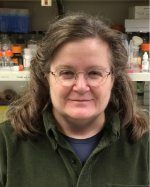Wound Repair: Dealing with Life's Little Traumas
to

Susan Parkhurst, Ph.D.
Professor, Basic Sciences Division
Fred Hutchinson Cancer Research Center
Dr. Susan Parkhurst studies the cytoskeleton, the cell’s internal framework. The cytoskeleton is a dynamic structure, constantly forming and breaking down to meet the cell’s changing needs, including changes in shape and movement. Problems with building and deconstructing the cytoskeleton arise in many human diseases. Wound healing, in which cells move to fill a gap, and the organization of the nucleus, the cell’s DNA storeroom, rely on the cytoskeleton. Dr. Parkhurst studies its roles in these normal conditions and what goes wrong in cancer cells. She aims to identify new cancer treatment targets or discover ways to make existing therapies more effective.
Summary
Whenever an organism sustains an injury, either to single cells or to a tissue, it must act quickly to repair the wound to prevent cell death, loss of tissue integrity, and invasion by microorganisms. The Parkhurst Lab uses Drosophila as a genetic model to dissect the molecular and cellular mechanisms underpinning the cell wound repair process. Cell wound repair is highly conserved and occurs in three main steps: i) rapid membrane resealing; ii) dynamic cytoskeletal reorganization for wound closure; and iii) membrane and cytoskeleton remodeling after wound closure to restore the cell to its unwounded state. Developmental, genetic, cell, molecular, and high-resolution imaging approaches are used to study the dynamic events from both global (genetic screens) and specific perspectives to identify the molecules, machineries, and pathways involved.
This page was last updated on Wednesday, May 18, 2022